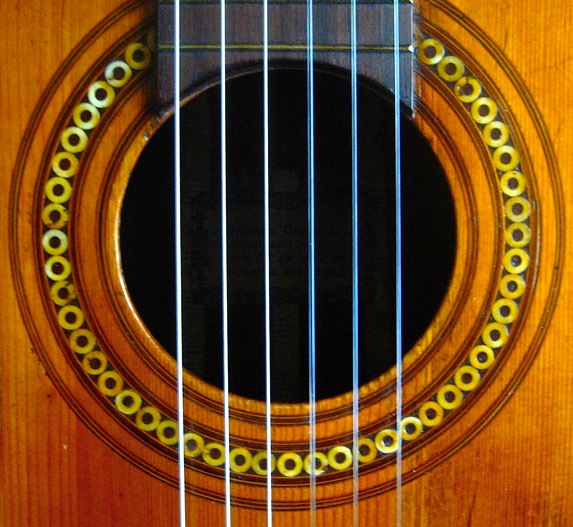1837 Manuel Gutierrez
1837 Manuel Gutierrez
Make: Manuel Gutierrez
Model: Classical Guitar
Model Year: 1837
Top: German Spruce
Back & Sides: Brazilian Rosewood
Scale: 645mm
Nut: 52mm
Finish: French Polish
Tuners: Pegs
Country: Spain
Condition: Used - Excellent
Location: Tucson
Manuel Gutierrez Martinez was born in Sevilla around 1773, and died there in 1857. Manuel Gutierrez chief claim to fame is that he was a close friend of Antonio Torres (b. 1817- d. 1892). According to Prat (1934:374) when Torres was first becoming established in Sevilla, Gutierrez shared his workshop at calle Cerrageria 36 with him. Torres arrived in Sevilla in 1845 so he probably shared Manuel's workshop sometime between 1849 when Gutierrez moved to Cerrageria 36, and 1854, when Torres opened his own workshop at Ballestilia 11, moving then to Cerrageria 32, a few doors down the street (Romanillos and Winspear 2001:176). According to Romanillos, (FE 2) shows that Torres was still learning his art in 1854. Romanillos notes that it is hard to assess just how much Torres learned from contact with other makers in Sevilla, "in particular with Manuel Gutierrez, it is probable that he was able to learn certain techniques to help him in his career" (Romanillos 1995:20-21). Frank Wallace, a concert guitarist who has recorded with a 1854 Gutierrez (Gyremusic CD), and has compared it with the 1857 Torres (FE 07) in the Yale collection believes the elderly Gutierrez must have shared his knowledge with Torres. Romanillos notes , Torres used an old neck on FE 07 that was originally made for a double course guitar. Since this guitar has a bull's horn headstock like Gutierrez used, it is possible that he got this neck from him. Wallace notes "here are other indisputable similarities between these instruments. They are alike in size, shape and lightness of construction, with the exception that Gutierrez'“ has a deeper body (over 100 mm!). Both instruments have three-piece backs, five radial struts, a v-shaped shaft splice, and an almost identical headstock, in a shape reminiscent of bull's horns." Wallace also observes, "similar techniques were clearly used by Gutierrez to refine the top of our guitar, whose thickness varies widely from 1.4-2.2 mm. Their sound is remarkably similar, in spite of the different woods for the back and sides (Gutierrez, Brazilian rosewood; Torres, cypress. Both are rich, dark, full and complex in sound." This 1837 Gutierrez is similarly built, although the bridge is a later replacement. This guitar also has a deep body measuring 100 mm at the neck, and 108 mm at the end. Acoustically, its tall sides are heard in its depth of tone. It is very responsive, and has excellent volume and power. The basses are woody, dark, rich, defined, and complex. The mid-range is well-developed producing lush notes. The trebles sing. They are sweet, rounded, polished, clear, incisive




